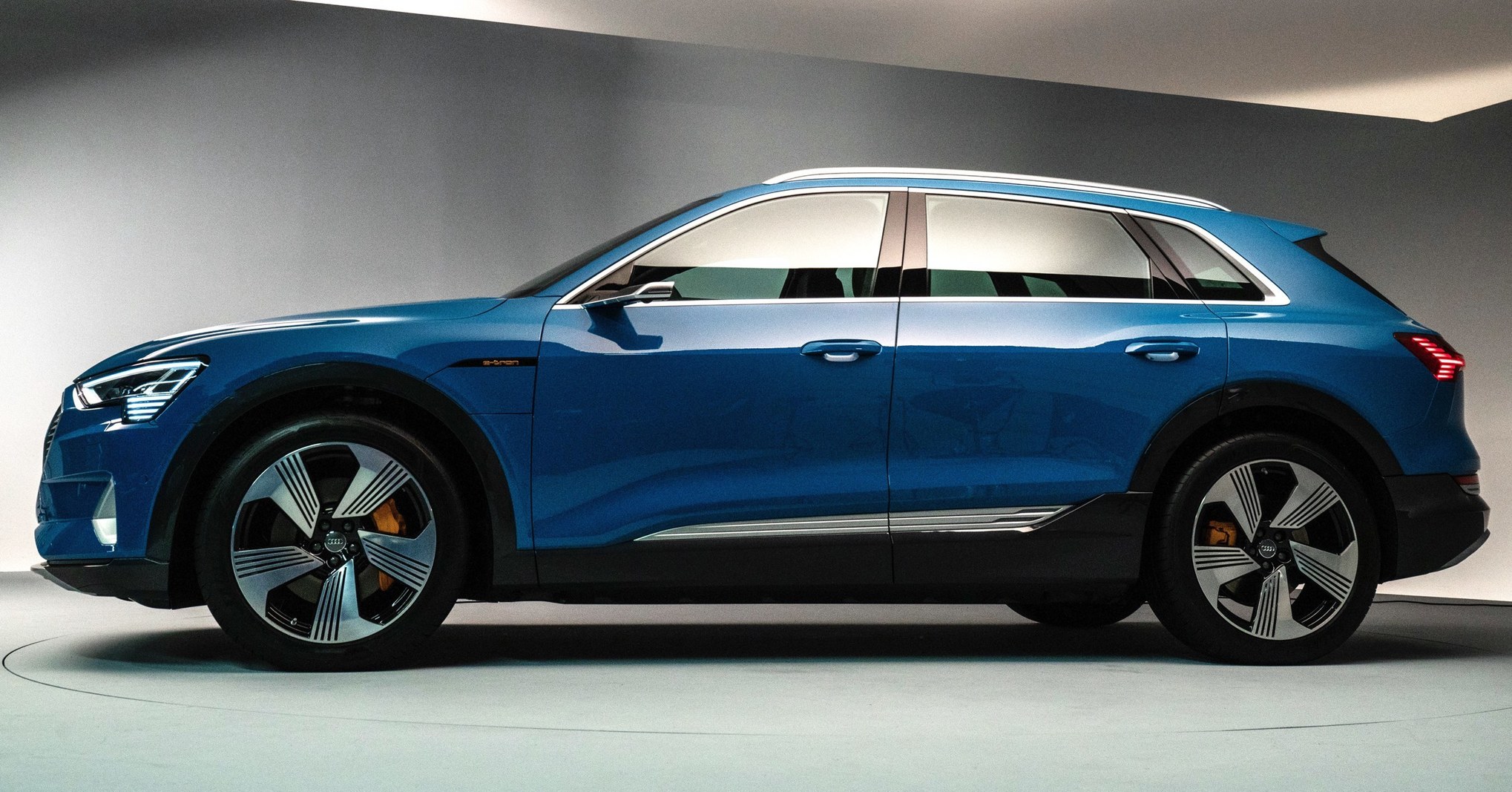Let’s start with the numbers. The E-tron has a 95-kWh battery against the EQC’s 80 and the Jaguar I-Pace’s 90. It’ll reach 60 mph in less than six seconds, where the Merc and Jag both do it in under five. It clocks 248 miles of range on the New European Driving Cycle, though American drivers will likely see a lower number after the EPA runs its less-generous test. (The Jag’s EPA range is 220 miles, compared to 300 on the Euro system.) The E-tron’s dual asynchronous motors produce a Euro-spec 355 horsepower and 413 pound-feet of torque, with the final US measurements still pending.
Potential buyers, though, will be interested in more than the raw figures. They’ll want to know what else sets this new SUV apart. So it’s too bad American drivers won’t get to enjoy some of the E-tron’s best bits. Slow-to-change US regulations don’t allow “virtual" wing mirrors that replace bulky side-view mirrors with cameras mounted on slender arms—the first among high-volume production cars. Same for Audi’s laser-powered Matrix headlights that offer precision aiming and selective dimming of the beam. And for networked car services that use “swarm intelligence” from other Audis on the road to forecast parking availability and alert drivers to fog or black ice.
Audi has paid considerable attention to infrastructure, one of those boring things that will make a major difference when it comes to owner ease-of-use. The E-tron will be the first electric car on the market that can support 150-kW DC fast-charging, a capability that will roll out as the Volkswagen-funded Electrify America group installs charging stations around the country. (VW is Audi’s parent company, and part of its settlement terms from the Dieselgate scandal include funding zero-emission infrastructure.) With that, charging should take less than 30 minutes to reach an 80 percent charge. At home, owners will be able to charge with either the standard 11-kW charger in 8.5 hours from empty or 4.5 hours if they have the optional 22-kW onboard charger. The whole thing will be manageable via an app and onboard tool that can optimize for off-peak charging and also factor where you can find a plug along your route. “We’ll calculate the most efficient route possible based not just on the presence of charging along the way but on the traffic and the route profile,” says Audi’s Carter Balkcom, the E-tron’s marketing lead.
The powertrain is tuned for electric cruising but also has the kind of power and performance that EVs can offer. The 125-kW motor powers the front wheels; a 140-kW motor covers the back. Under most driving conditions, the E-tron will function as a rear-drive vehicle, until the front motor is needed for acceleration or traction. When the car is in Sport mode, drivers can boost both motors to a combined output of 400 horsepower for up to 10 seconds at a time—while passing, for instance—by pushing the accelerator past its usual stopping point.
Regenerative braking comes courtesy of both electric motors, contributing about 30 percent of the total range. Regardless of whether the driver presses the brake pedal or merely lifts off the accelerator, the first 0.3 g’s of braking energy come from that regenerative process, in which the motors function as alternators and slow the car by providing resistance, producing electricity that heads into the battery. Drivers can also adjust the amount of regenerative braking by paddles behind the steering wheel, dialing more or less resistance to suit their preferences. At the highest level, the car allows for single-pedal driving.
Sourced through Scoop.it from: www.wired.com



Leave A Comment